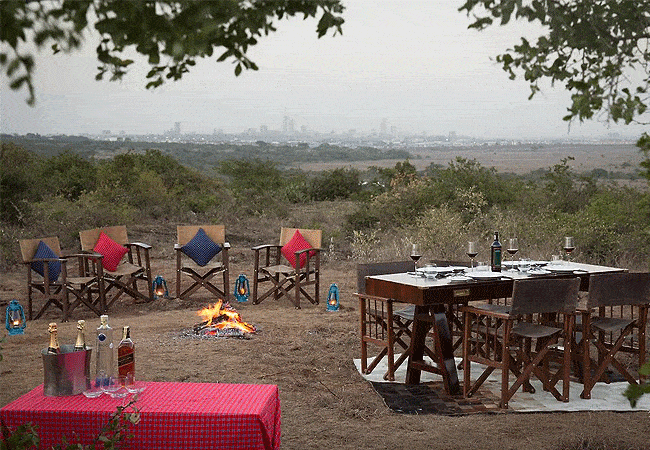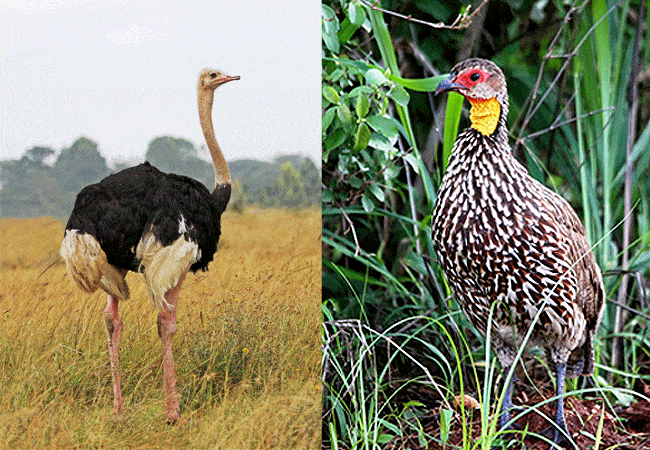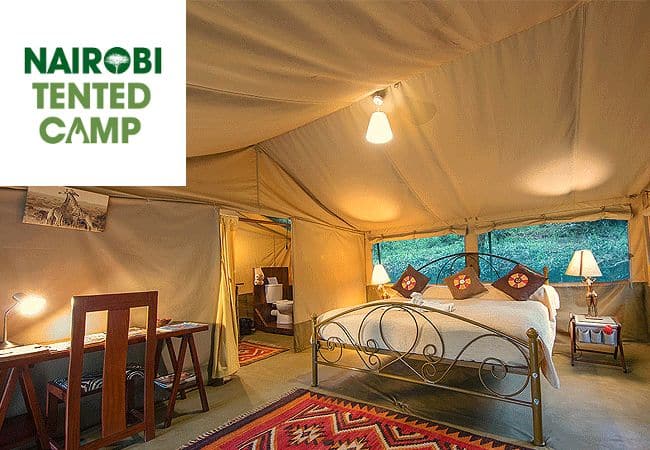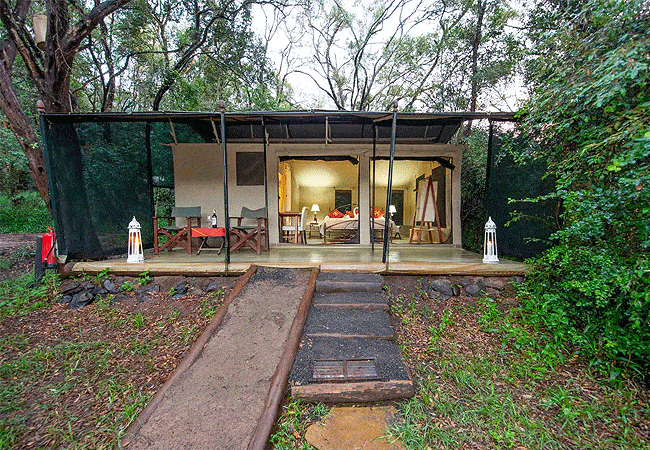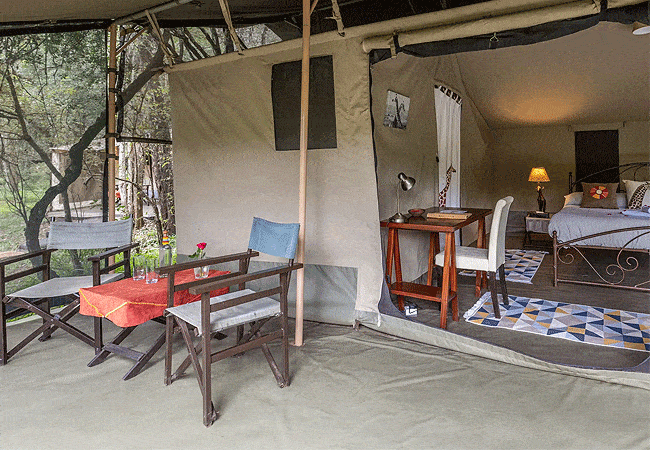Nairobi National Park
Nairobi National Park covers 117km² (45 square miles) and offers a surreal African safari experience just 7 km from downtown Nairobi. Despite its small size, Nairobi National Park has excellent game viewing, especially during the dry season when plains game migrates into the park from the adjacent, and unfenced, Kitengela Plains.
Nairobi National Park Vegetation | Ecosystem
Nairobi National Park is electrically fenced on the northern, eastern, and western boundaries whereas its southern boundary which is formed by the Mbagathi River is not fenced and thus is open to the Kitengela Conservation Area and the Athi-Kapiti plains. These plains act as a migration corridor allowing wildlife between the park and the adjacent Kitengela plains.
The park comprises different vegetation types but mainly features the dry transitional savanna type of vegetation, which consists of wide-open rolling grass plains and the backdrop of the city scrapers, partly thick woods near the city outskirts, and predominantly scattered acacia bush, which play host to a wide variety of wildlife.
The western side of this park has a highland dry forest and a permanent river with a riverine forest, there are also stretches of broken bush and deep rocky valleys and gorges with scrub and long grass. Tree varieties including Muhuhu Tree, Cape chestnut, and African olive (Mutamaiyu in Kikuyu) also cover the park.
On the open southern boundary of the Park are the Athi-Kapiti Plains and Kitengela migration corridor which are important wildlife dispersal areas during the rainy season. Man-made dams that have been created within the park have added a further habitat favorable to certain species of birds and other biomes.
How do I get to the Nairobi National Park?
By Road: Nairobi National Park is only 10 km from Nairobi’s city center via Langata Road and visitors can get there by private or public transport. The park is a 15-minute drive from the city center and Jomo Kenyatta International Airport.
By Air: International tourists fly to Jomo Kenyatta International Airport and tourists on a combined safari can use a domestic chartered flight to Wilson Airport and then drive to the park.
The park can be accessed via several park gates which include Langata Gate, the Main Gate at KWS headquarters on Langata Road, Mbagathi Gate (service gate), Cheetah Gate, Maasai Gate, and East Gate (Embakasi) and Banda Gate, etc.
What is the best time to visit the Nairobi National Park?
Nairobi National Park is open all year round and can be visited at any time. However, the dry season from June to September is generally the best time for wildlife watching, when animals can easily be seen around water sources.
Wildlife watching is usually difficult during the rainy season (between March and May and October to November). During these months, rainfall might restrict game drives and the grass tends to be very high.
What kind of wildlife can be viewed in Nairobi National Park?
Nairobi National Park is home to four of the Big Five animals: lions, leopards, buffalo, and rhinos, but lacks elephants. Other wildlife includes giraffes, zebras, cheetahs, hyenas, and various antelopes like impalas and gazelles. The park also supports reptiles like monitor lizards, rock pythons, and puff adders.
It boasts over 520 bird species, making it a prime birdwatching destination. Notable birds include the Maasai ostrich, Goliath heron, African fish eagle, and Secretarybird. Raptors such as the Rüppell’s griffon vulture and the black-chested snake eagle are also commonly seen.
The park is a sanctuary for 76 black rhinos and 13 white rhinos, offering the highest concentration of black rhinos in Kenya. Additionally, the Sheldrick Elephant Orphanage, located within the park, rehabilitates sick and injured animals, making it a significant conservation center.
What kind of activities can be done in Nairobi National Park?
Game Viewing: The park’s proximity to the city offers easy access to see four of the Big Five—lions, leopards, buffaloes, and rhinos—along with various other species like zebras, giraffes, and cheetahs. Morning, afternoon, and night game drives provide different opportunities to witness predator activity and observe the landscape’s herbivores.
Rhino Tracking: This is particularly exciting, focusing on its sanctuary for black rhinos. Guided by experienced rangers, visitors learn about rhino conservation and the threats they face. The park is renowned for its successful rhino conservation efforts, making it a key destination for observing these endangered animals.
Bird Watching: Nairobi National Park is rewarding with over 520 recorded bird species, including rare ones like the shoebill stork and Madagascar pond-heron. Migratory birds make the park a hotspot between November and April, attracting both seasoned and novice birders.
Bush Dinners and Sundowners: These offer a more intimate experience, with gourmet dining in the wild and breathtaking sunsets over the savannah. These activities blend luxury and nature, enhancing the overall safari experience. The park’s unique setting, with views of the Nairobi skyline, provides a surreal backdrop to these excursions.
Click on the links below to view our Nairobi National Park tours:
Nairobi National Park Day Tour | Click Here
Nairobi Night Game Drive Safari | Click Here
Nairobi National Park 2 Days 1 Night Tour | Click Here
Nairobi National Park Carnivore Bomas Kenya Tour | Click Here
Nairobi National Park Game Drive & Bush Dinner Tour | Click Here
Nairobi National Park Elephant Orphanage Giraffe Centre Tour | Click Here
Is there accommodation in Nairobi National Park?
Nairobi National Park has several high-quality accommodation options, located both inside and outside the park in distinct areas to suit every budget. Nairobi Tented Camp is the only camp located inside the park.
The other hotels, camps, and lodges are located outside the park some of which include; Emakoko Lodge, Eka Hotel, Panari Hotel, African Heritage House, Emara Ole Sereni & Ole Sereni Hotel. Click the following links below to view more hotels in Nairobi:
Nairobi National Park Wildlife | Animals & Birds
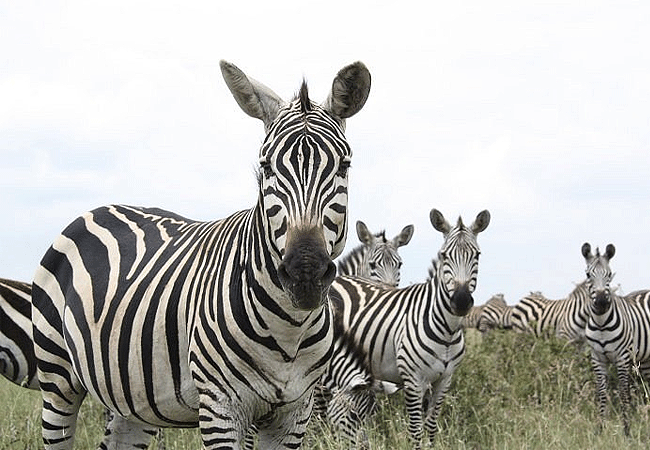

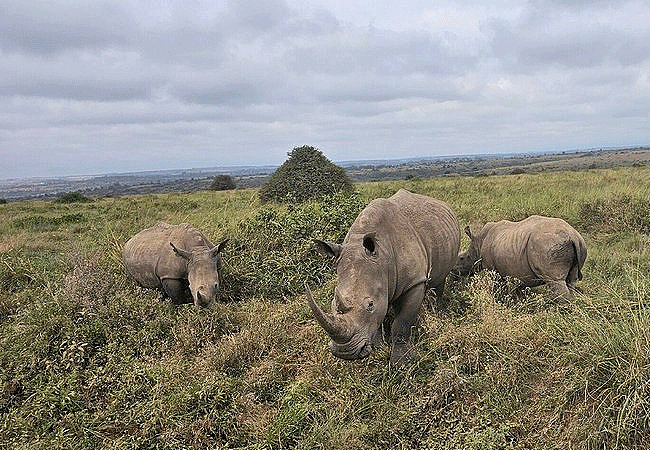
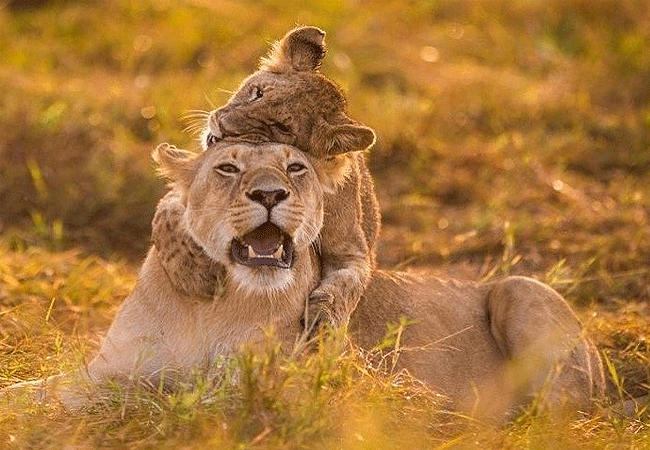
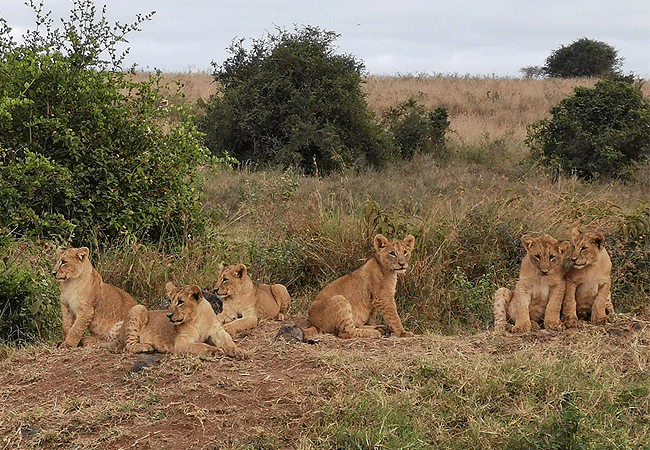


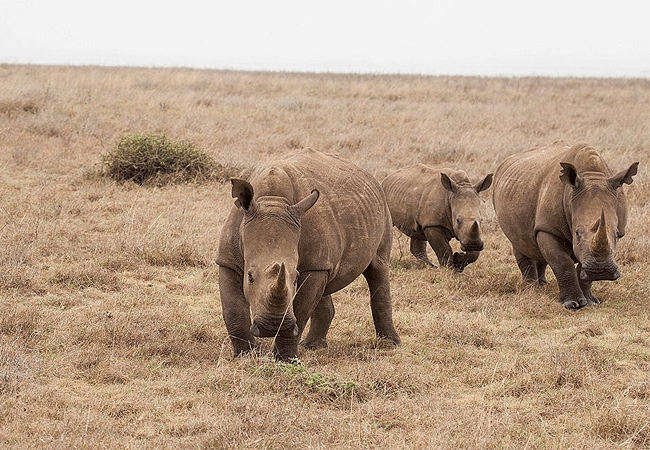

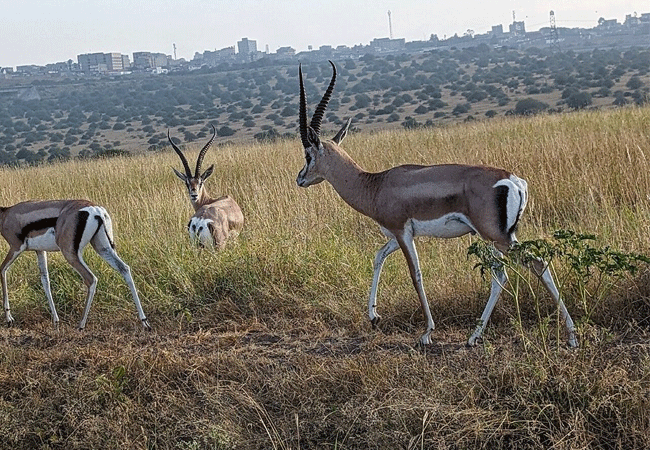
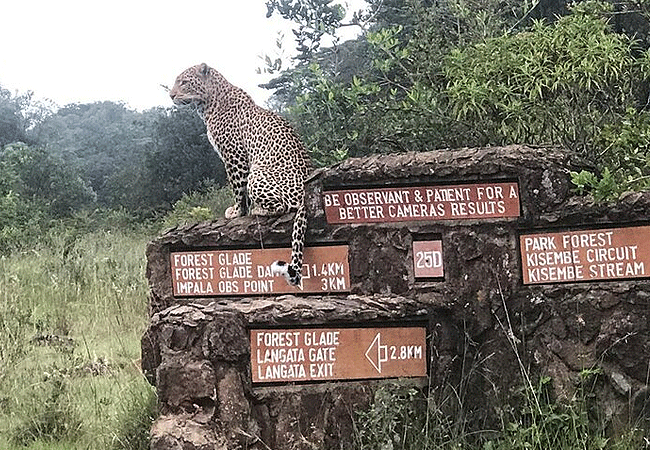
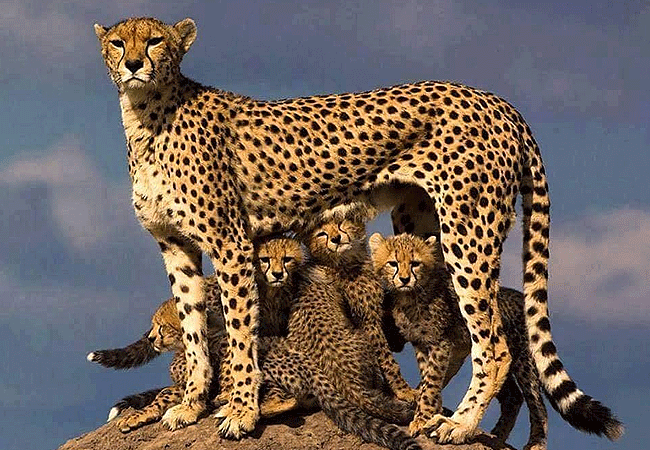
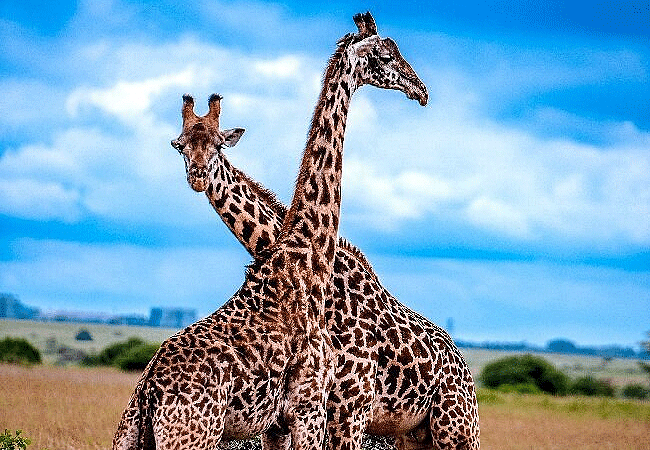
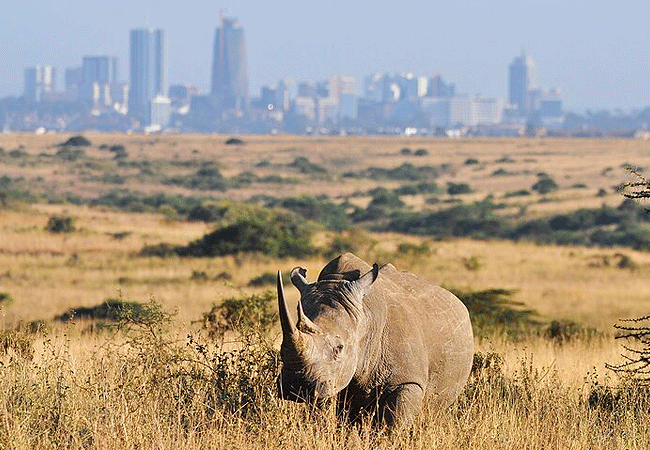
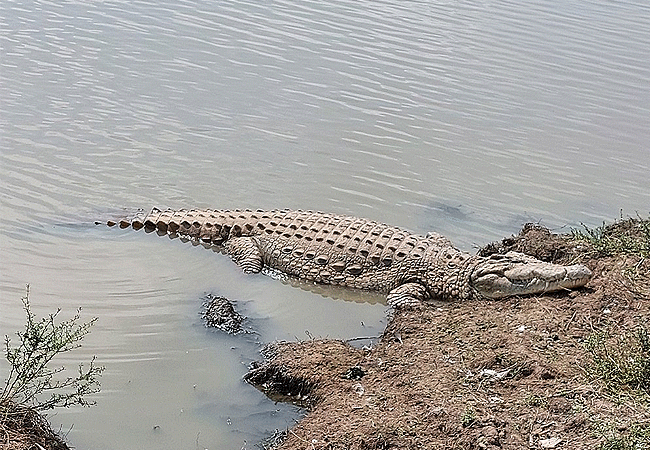

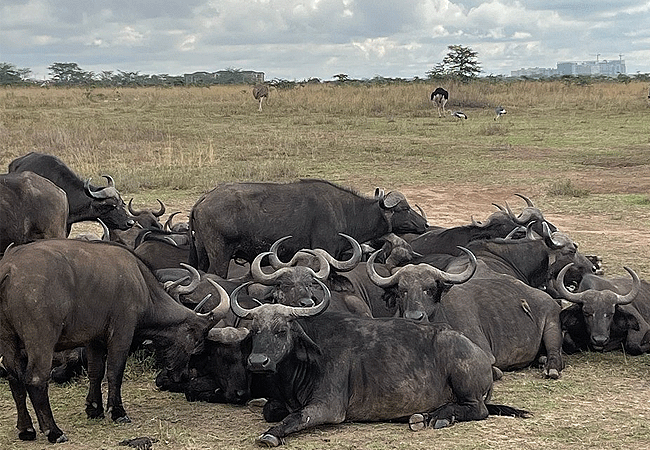
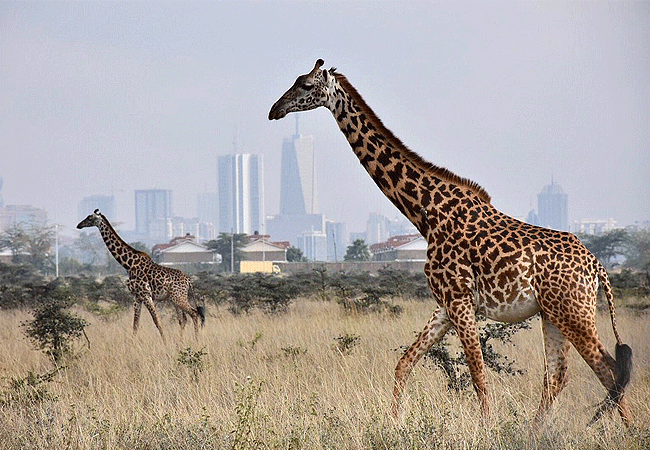

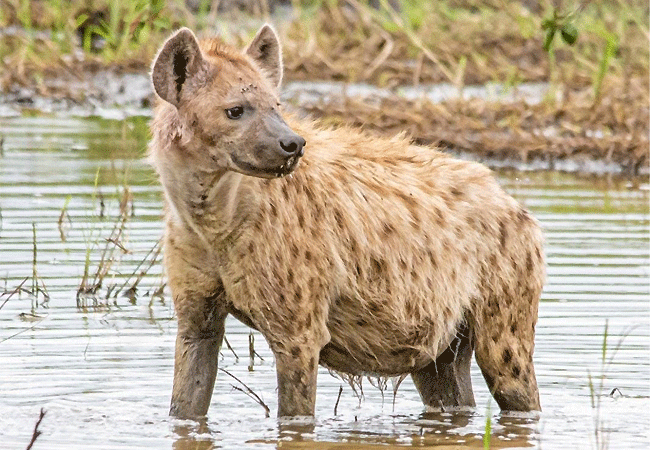

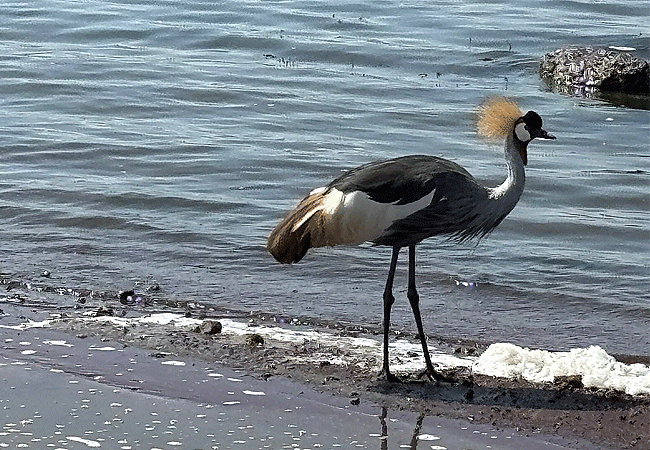
Four of the big 5 animals are part of the main attractions in Nairobi National Park. Other animals include Species found in the park including giraffes, hippopotamus, spotted hyenas, blue wildebeest, plains zebra, cheetah, Thomson’s gazelle, Grant’s gazelle, common eland, impala, hartebeest, waterbuck, common warthog, olive baboon, black-backed jackal, and Nile crocodile.
Notable Reptiles that can be seen include; Monitor Lizard, Crocodile, Agama Lizard, Jackson’s Chameleon, Rock Python, Puff Adder, Sand Snake, Leopard Tortoise, and Serrated Hinged Terrapin.
Nairobi National Park has more than 520 bird species recorded, making it an astounding destination for day birding tours. Notable Birds include the Maasai Ostrich, African Darter, African Finfoot, Dwarf Bittern, Goliath Heron, Saddle-billed Stork, Spur-winged Goose, African Crowned Eagle, Secretarybird, and African Fish Eagle.
Others include Ruppell’s Griffon Vulture, Black-chested Snake-Eagle, Gabar Goshawk, Augur Buzzard, Tawny Eagle., Bateleur Eagle, and Grey-crowned Crane, Kori Bustard, White-bellied Bustard, Hartlaub’s Bustard, Bronze-winged Courser, and African Skimmer.
Nairobi National Park is a rhino sanctuary with 76 indigenous black rhinos and 13 white rhinos making it home to the highest number of black Rhinos in Kenya. It is the only park in Kenya with no elephants. They were moved from Nairobi National Park to reduce the Human-wildlife conflict.
The Nairobi National Park is home to the Sheldrick Elephant orphanage which is home to many sick and injured animals that are brought here for care, rehabilitation, or surgery. A visit to this orphanage will teach you about the lives of the animals and how they are rehabilitated.
Nairobi National Park Activities
Game Viewing
Game viewing in Nairobi National Park offers a unique experience due to its proximity to Kenya’s capital city. Just 10 kilometers from Nairobi’s bustling center, visitors can quickly transition from urban life to the natural wilderness.
The park, though relatively small at 117 square kilometers, is rich in wildlife, offering a chance to see four of the Big Five: lions, leopards, buffaloes, and the endangered black rhino. The park’s rhino sanctuary is particularly notable for its success in conserving these majestic creatures.
The park’s landscape consists of open grasslands, acacia bushlands, and wooded valleys, providing diverse habitats that support a wide variety of wildlife. Game drives are the most popular way to explore, with options for morning, afternoon, and even night drives.
Morning game drives (6:00 AM – 9:00 AM) are ideal for witnessing predators like lions winding down after a night of hunting, while afternoon drives (3:00 PM – 6:00 PM) offer better lighting for photography and views of herbivores like giraffes, zebras, and wildebeest. Click on the following link to view our Nairobi National Park tour: Nairobi National Park Day Tour
Night game drives are rare but allow visitors to observe nocturnal species such as hyenas and elusive leopards. You can book a Nairobi National Park Night game drive on the following link: Nairobi National Park Sunset & Night Game Drive Tour
The park also boasts over 520 bird species, making it a paradise for bird watchers. Migratory birds add to the spectacle during certain times of the year. Notable Birds include the Maasai Ostrich, African Darter, African Finfoot, Dwarf Bittern, Goliath Heron, Saddle-billed Stork, Spur-winged Goose, African Crowned Eagle, Secretarybird, and African Fish Eagle. Another highlight is the Nairobi skyline, visible from many points in the park, offering a surreal backdrop to the wildlife experience.
Rhino Tracking
Rhino tracking in Nairobi National Park offers an exciting and educational experience, providing visitors with the rare opportunity to observe black rhinos in their natural habitat. As part of Kenya’s conservation efforts, the park, known as “Kifaru Ark,” boasts a robust population of over 76 black rhinos, making it one of the best places to see these endangered animals close to a major city.
Tracking rhinos typically begins in the early morning or late afternoon when the rhinos are most active. Led by experienced rangers, the activity often involves game drives through the park to locate the rhinos and then proceeding on foot for a closer look.
Rhino tracking is not only about wildlife viewing but also contributes to conservation efforts, as visitors support the park’s initiatives to protect and monitor the rhino population. The rangers play a crucial role in educating participants about the rhino’s behavior, habitat, and the challenges of rhino poaching.
Nairobi National Park’s unique setting, with the city skyline visible in the background, adds to the surreal experience of watching rhinos roam in the wild. The park’s commitment to rhino conservation has been critical in boosting the population of this endangered species, particularly the black rhino, which faces significant threats from poaching.
The park offers a stark contrast between urban development and wildlife conservation, making it an ideal destination for travelers interested in wildlife and the intricacies of conservation efforts in urbanized regions.
While rhino tracking is a thrilling adventure, it also underscores the importance of ongoing conservation work. Visitors gain insight into how anti-poaching measures and protected habitats help safeguard the future of these majestic animals. This blend of adventure and education makes rhino tracking in Nairobi National Park a must-do activity for wildlife enthusiasts.
Bird Watching
Bird watching in Nairobi National Park is a rewarding experience, with over 520 bird species recorded in the park. As a unique wildlife area located near a bustling urban center, the park offers birding enthusiasts the opportunity to observe a diverse array of birdlife within a relatively small area. The park’s landscape, which includes open savannah, forested areas, and wetlands, provides different habitats that attract both resident and migratory birds.
Among the notable species are the Jackson’s widowbird, which breeds in the grasslands after good rains, and the rare Madagascar pond-heron. The park is also a prime location to spot globally threatened species such as the shoebill stork, lesser kestrel, and Basra reed warbler. The region is part of the Somali-Masai and African Highlands biomes, featuring species such as the red-throated tit and the threatened martial eagle.
Migratory birds from Europe and North Africa flock to the park between November and April, making this the best time for birding. During this period, you may witness large numbers of lesser falcons, with more than 5,000 individuals sometimes present.
Other birds commonly seen include the superb starling, lilac-breasted roller, grey-crowned crane, and African quail-finch. Water birds, such as the saddle-billed stork and yellow-billed oxpecker, can also be spotted around the park’s rivers and wetlands.
Bush Dinners & Sundowners
Bush dinners and sundowners in Nairobi National Park offer a unique and memorable experience, combining fine dining with the stunning backdrop of African wilderness. These activities allow visitors to enjoy the beauty of the park in a more intimate and tranquil setting, away from the typical daytime safari excursions.
The bush dinner is typically presented with tables, safari chairs, a ‘bush bar’, and a ‘bush kitchen,’ where a broad range of meats, poultry, fish, and vegetables are cooked on-site (supplemented by fresh soups, salads, and desserts).
Sundowners, on the other hand, are a more relaxed affair that involves enjoying drinks as the sun sets over the savannah. This activity typically takes place after an afternoon game drive, offering guests a chance to unwind and take in the breathtaking views of the park as the sky changes color.
Drinks such as wine, cocktails, or local brews are served at a scenic spot, with the Nairobi skyline visible in the distance or against the backdrop of the park’s rolling plains. The combination of the setting sun, the peacefulness of the wilderness, and the distant sounds of wildlife create a serene and memorable experience.
Click on the following link to book a Nairobi National Park Game Drive & Bush Dinner Tour
Nairobi National Park Entrance Fees
Nairobi National Park Entrance Fee (1st January 2025 to 31st December 2025)
High Season – 1st July to 31st September, and 1st December to 29th February |
||||||
| Number of Days | East Africa Citizen/ Resident (Kshs) | Rest of Africa (USD) | International Visitors (USD) | |||
| Adult | Child/ Student | Adult | Child/ Student | Adult | Child/ Student | |
| Nairobi National Park | 2000 Kenya Shillings |
500 Kenya Shillings |
50 US Dollars |
20 US Dollars |
100 US Dollars |
35 US Dollars |
| Nairobi Animal Orphanage & Nairobi Safari Walk | 250 Kenya Shillings |
150 Kenya Shillings |
15 US Dollars |
10 US Dollars |
25 US Dollars |
15 US Dollars |
| Nairobi Sanctuary package (Nairobi Orphanage, Nairobi Safari Walk) | 400 Kenya Shillings |
250 Kenya Shillings |
24 US Dollars |
15 US Dollars |
40 US Dollars |
25 US Dollars |
| Nairobi Package (Nairobi National Park, Nairobi Animal Orphanage, Nairobi Safari Walk) | 2250 Kenya Shillings |
650 Kenya Shillings |
65 US Dollars |
30 US Dollars |
125 US Dollars |
50 US Dollars |
Low Season – 1st October to 31st November and 1st March to 30th June |
||||||
|
Number of Days |
East Africa Citizen/ Resident (Kshs) | Rest of Africa (USD) |
International Visitors (USD) |
|||
| Adult | Child/ Student | Adult | Child/ Student | Adult |
Child/ Student |
|
|
Nairobi National Park |
2000 Kenya Shillings |
500 Kenya Shillings |
25 US Dollars |
10 US Dollars |
100 US Dollars |
20 US Dollars |
| Nairobi Animal Orphanage & Nairobi Safari Walk | 200 Kenya Shillings |
150 Kenya Shillings |
15 US Dollars |
10 US Dollars |
20 US Dollars |
15 |
Notes
* International (INTL) Visitors – Refers to visitors other than EAC and the rest of Africa with a valid passport
* Rest of Africa – Refers to nationals of African countries other than East African countries with a valid passport
* Kenyan Citizen – Refers to Kenyan nationals by birth and registration, with a valid Identification Card with a valid passport
* Resident -Refers to persons of other nationalities residing in Kenya with valid documentation from the Kenyan government
* Daily fee is a single entry fee valid for 24 hours of continuous uninterrupted stay inside a KWS national park/ reserve/ sanctuary
* Senior Citizen – Refers to Kenyan Citizens aged 75 years and above. Senior citizens shall access all KWS parks, reserves, and sanctuaries for free
* Children -Refers to persons aged five (5) years to seventeen years (17) years. Children below the age of five (5) years shall access all KWS parks, reserves, and sanctuaries for free
* East African Community (EAC) Citizen – Refers to nationals of East African countries of Kenya, Uganda, Tanzania, Rwanda, South Sudan, Burundi and the Democratic Republic of Congo (DRC)
* Conservation Fees – Refers to fees charged in national parks, reserves, and sanctuaries to conserve and protect natural resources, such as wildlife, habitats, and ecosystems
* Persons with Disabilities (PWD) – Refers to Kenyan Citizens who have a physical, sensory, mental, or other impairment, including any visual, hearing, learning, or physical incapability, which adversely impacts social, economic, or environmental participation. PWD access all KWS parks and sanctuaries for free upon presentation of valid documentation from the National Council for Persons with Disabilities
* Student – Refers to an individual from a recognized secondary, government, or private college or university up to twenty-three (23) years old visiting the parks for purposes of learning about conservation through a documented and organized arrangement with that institution. It excludes students on personally arranged holidays. KWS will require a minimum of one (1) week’s notice to issue a written authorization for the student rate
Nairobi Animal Orphanage | Nairobi Education Centre
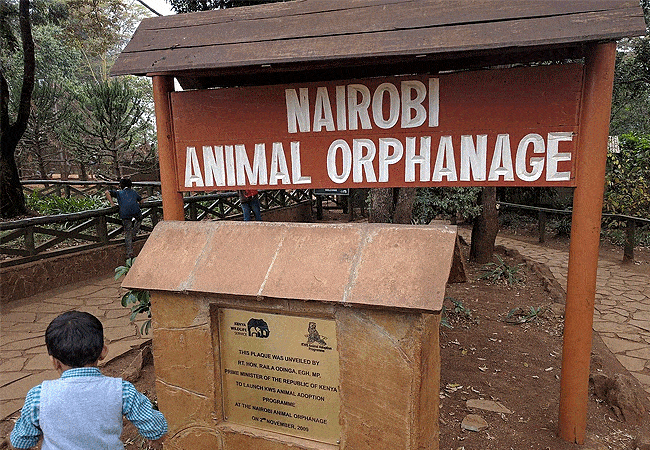
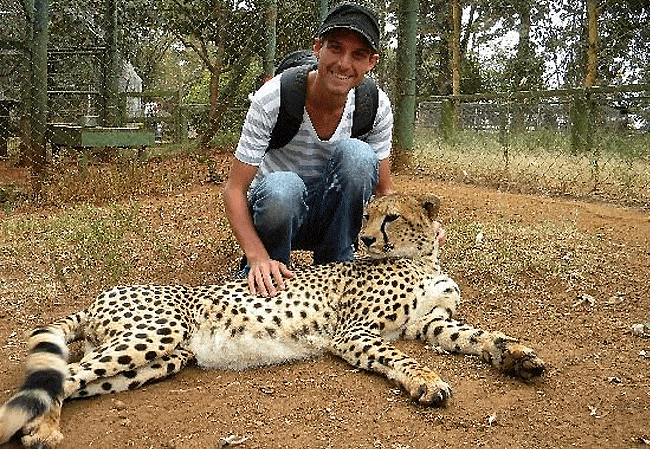

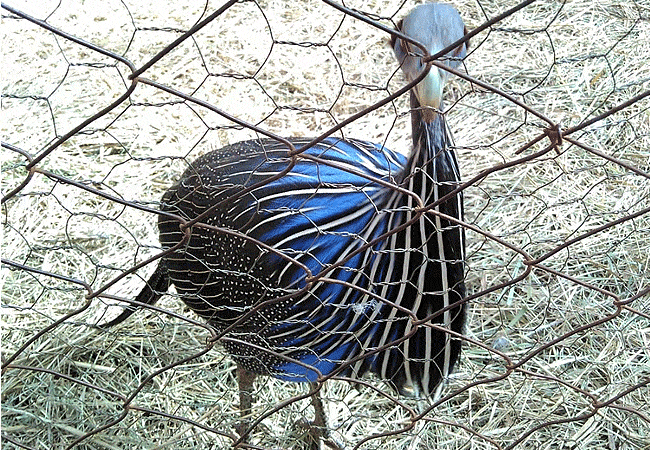

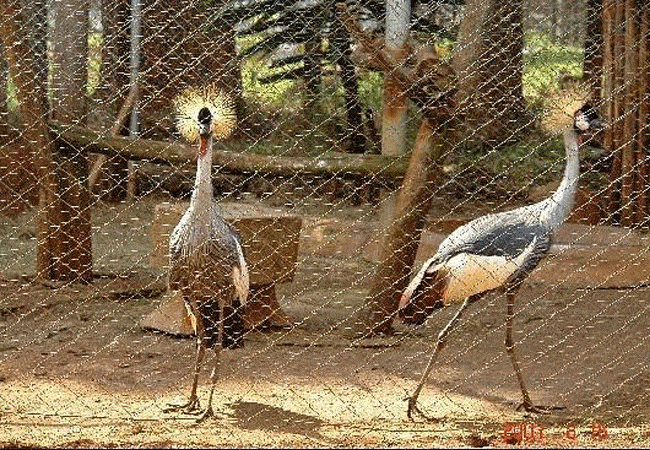
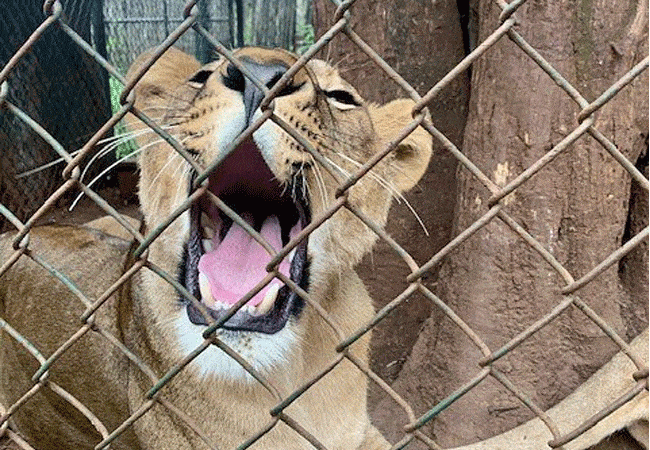


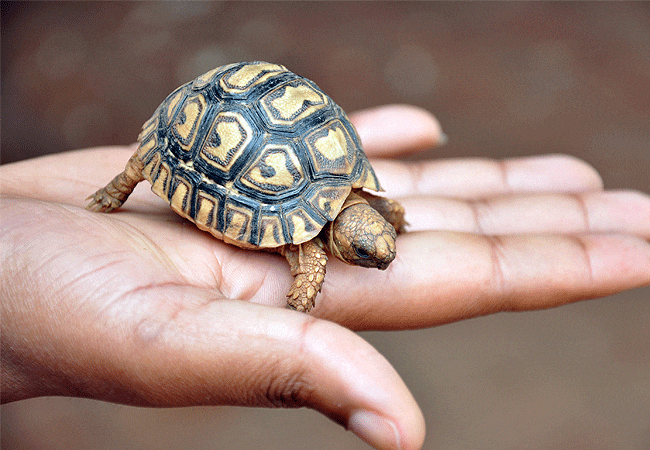
The Nairobi Animal Orphanage is a refuge for wild animals and is located in the Nairobi National Park. The Animal Orphanage is just 20 minutes (10km) from the center of Nairobi and is situated near Kenya Wildlife Service, along Langata Road. The Nairobi Animal Orphanage is open daily from 8 am to 6 pm (seven days a week). It serves as a treatment and rehabilitation center for wild animals.
There are more than 20 animal and bird species including lions, cheetahs, hyenas, jackals, serval cats, rare Sokoke cats, warthogs, leopards, various monkeys, baboons, and buffalo. Various birds can also be viewed including parrots, guinea fowls, crowned cranes, and ostriches.
Observing animals at the orphanage is different and not as majestic as spotting them roaming in the wild in healthy conditions. However, the experience of visiting Nairobi Animal Orphanage is one of a kind. It is exciting to interact close-up with the wildlife and also know that these animals are survivors.
While being there, you don’t need a guide. All animals’ cages are labeled with information for you, from the smallest bird to lions. The label mentions their stories, how they were rescued, where they came from, who took care of them in the orphanage, and lastly whether they were injured and abandoned.
Below are the 2024 entry fees;
* Non-Residents Adult: 25 US Dollars & Child: 15 US Dollars
* Citizens Adult: 250 Kenya shillings & Child: 125 Kenya shillings
* Residents Adult: 250 Kenya shillings & Child: 120 Kenya shillings
Nairobi Safari Walk (boardwalk with uninterrupted views of the Animals)
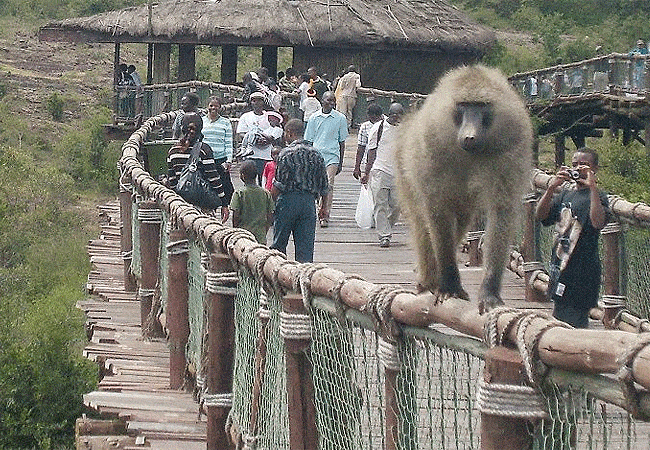
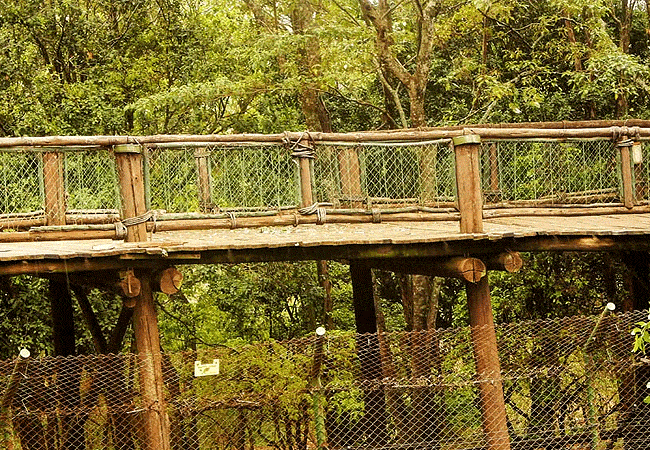
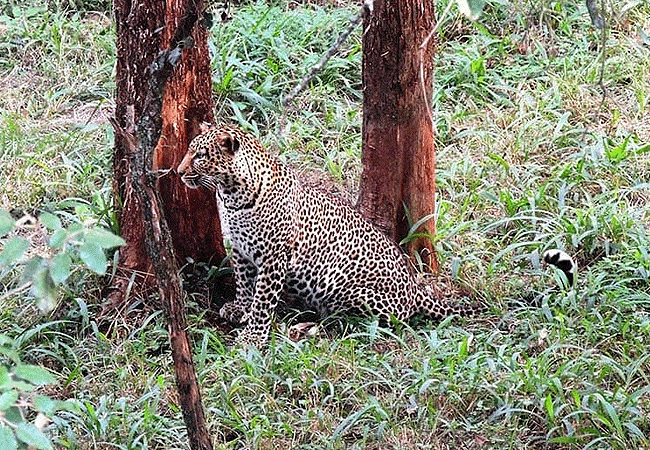



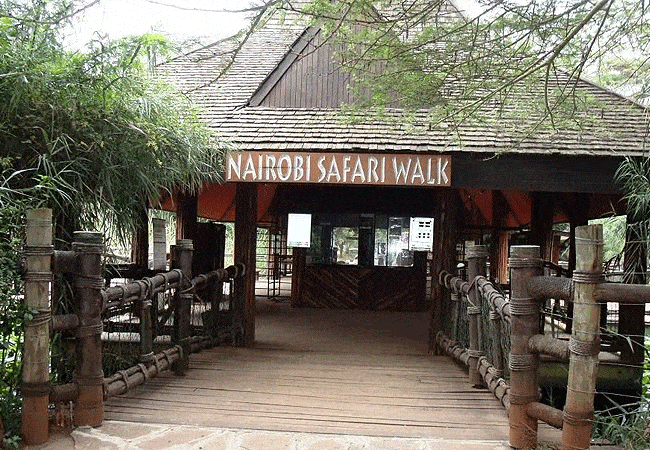

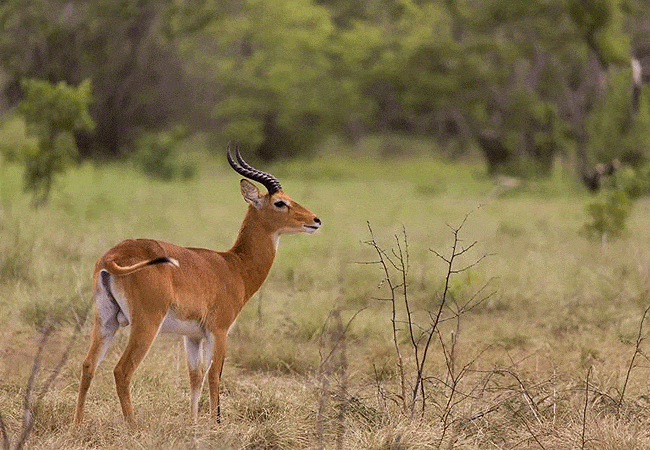
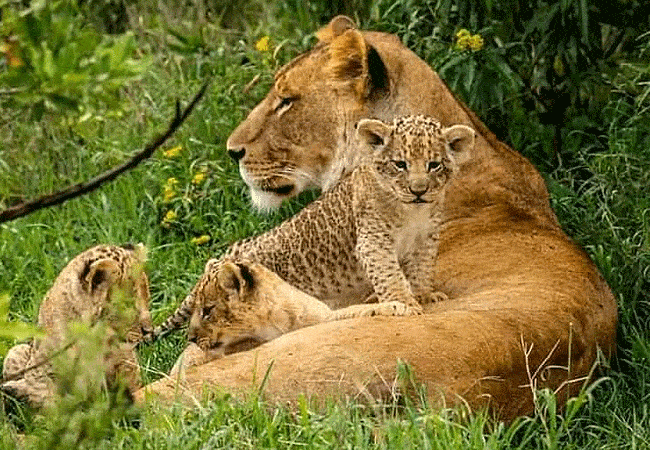
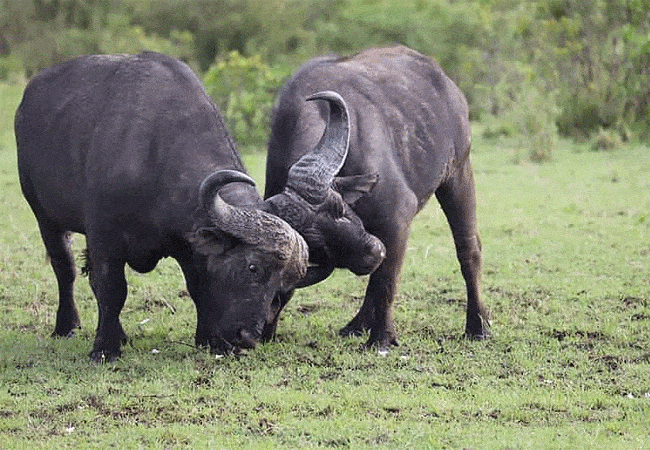
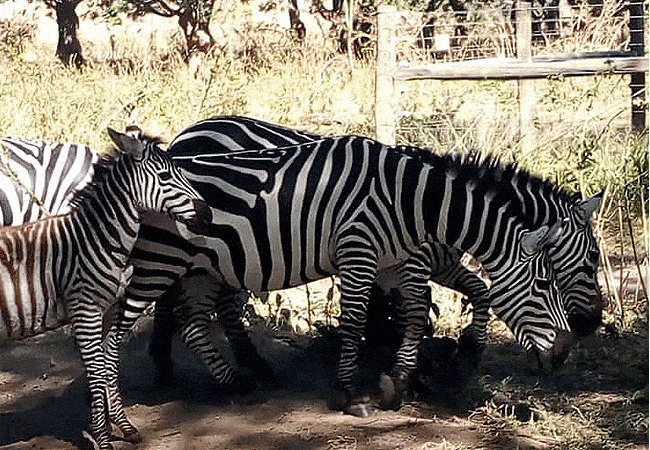
The Nairobi Safari Walk offers a raised wooden boardwalk that allows for uninterrupted views of the animals, and is a showcase for Kenya’s National Parks and reserves, allowing visitors to discover what they can expect to see across the country while on safari.
Nairobi Safari Walk is about 7 km from the city centre and is easily accessible on tarmac roads. Located off Lang’ata Road, Kenya Wildlife Service head office. It opens from 9:00 am till 5:30 pm. Available activities include bird watching, walking, photographing, and game viewing. The safari Walk has 3 distinctive ecosystems, namely, wetland, savannah, and forestry.
The first ecosystem you encounter when you enter the Nairobi Safari Walk is a Wetland covered in water lilies and fringed with papyrus. This is also home to grazing pigmy hippos and lazing crocodiles.
The next habitat in line is the Savannah environment which plays host to an albino Zebra in a herd of its regular species, Antelopes, Giraffe, Hyena, the rare Bongo, a White Rhino, Leopards, Cheetahs, and Lions.
Raised boardwalks meander through the different enclosures, with signboards along the way providing useful information on the species of plants and animals found there. Strategically located viewpoints close to the enclosures offer a close-up look at the occupants going about their daily lives.
A nature trail through a Woodland, the last of the three habitats in the Nairobi Safari Walk, showcases some of Kenya’s indigenous plants, with signposts along the trail describing their traditional uses. Benches at various locations along the trail provide resting places for anyone wishing to take a moment to enjoy the forest sights and sounds.
The Nairobi safari walk hosts diverse animals including Zebras, Antelopes, Primates, Rare Bongos, White Rhinos, Albino Zebras, Cheetahs, Leopards, Lions, Tigers, sea creatures, and birds of every kind. It is also home to some 150 species of local trees.
Below are the 2024 entry fees;
* Non-Residents Adult: 25 US Dollars & Child: 15 US Dollars
* Citizens Adult: 250 Kenya shillings & Child: 125 Kenya shillings
* Residents Adult: 250 Kenya shillings & Child: 120 Kenya shillings
David & Daphne Sheldrick Wildlife Trust | Haven for Elephants & Rhinos
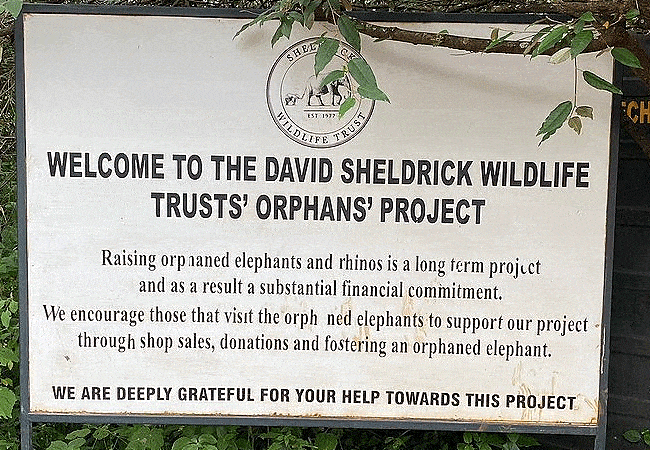

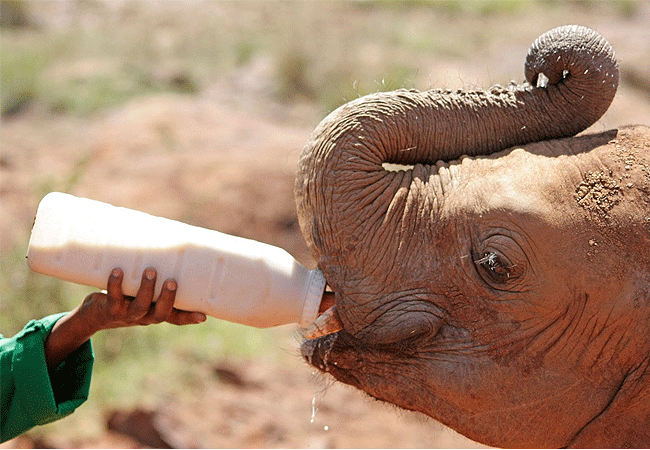


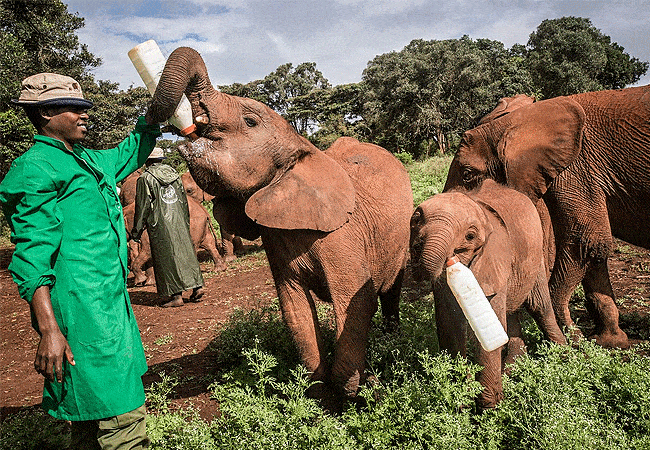



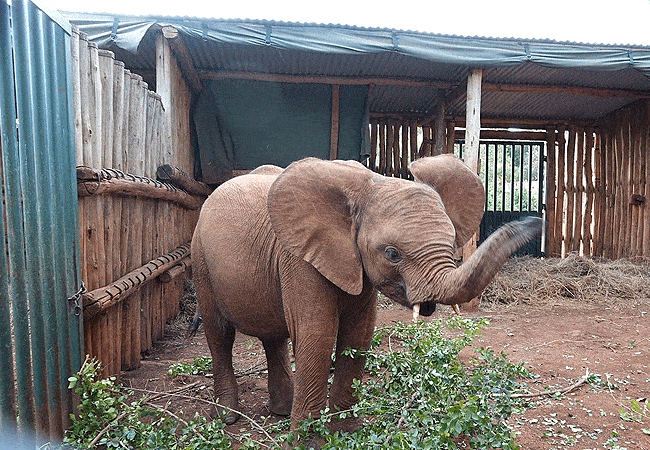
The Nairobi National Park is home to the David Sheldrick Trust Animal Orphanage which hand-rears and re-releases orphaned elephant and rhino calves. The Elephant Orphanage Nursery offers a safe haven to orphaned baby elephants that are rescued from parks and reserves in Kenya.
The orphanage is located within Nairobi National Park about 17 km from the city center. The orphanage rescues baby elephants that have been orphaned due to poaching, drought, human/ animal conflict, etc, and raises them until they can be released into the wild.
Over 100 elephants, found as orphans and raised by the trust, are now living wild lives in Tsavo National Park in Kenya. The age range of the elephants can vary from a few months to three years. Each elephant is assigned to its own keeper, who acts as a surrogate mother and will stay with the elephant until it is released back into the wild in Tsavo East National Park.
The orphanage also has three reintegration units located in the Greater Tsavo Conservation Area, Ithumba, and Umani Springs in the Kibwezi Forest. Daphne Sheldrick Elephant Orphanage nursery is open to the public daily between 11:00 am to 12:00 pm. You can visit the baby elephants from 5:00 pm (by appointment) when they return to the stockades for the night.
Elephant orphanage entrance fee: 500 Kenyan shillings per person (about 7 US Dollars).
Nairobi National Park Accommodation & Picnic Sites
Nairobi Tented Camp is a luxury tented accommodation located in the heart of Nairobi National Park. It is the first and only camp in the Nairobi National Park. Nairobi National Park is a unique ecosystem by being the only protected area in the world close to a capital city.
Deep within the riverine forest minutes from Jomo Kenyatta Airport, Wilson Airport, and only 7 km from Nairobi city center. The camp is the first accommodation of any sort to be allowed in this unique safari destination.
Other hotels near Nairobi National Park include Ololo Safari Lodge, Nyati Hill Cottages, Osoita Lodge, Masai Lodge, The Last Village Lodge, The Emakoko Lodge, Twiga Campsite, and the Tamarind Tree Hotel.
Nairobi National Park Picnic Sites
Nairobi National Park has several picnic sites where you can stop and break while on a game drive. These include;
Kingfisher Picnic Site (Junction 27C )
A cool, green-shaded area with picnic tables, this is an ideal site for early morning bush breakfasts, lunchtime relaxation, or evening sundowners.
Mokoyeti Picnic Site (Junction 14B)
An open cliff-top site with thatch-roof shaded picnic tables, latrines, and extensive parking, this is an ideal site for family picnics at any time of the day.
The Ivory Burning Site (Junction 1A)
Immediately inside the main gate, this area marks the spot where, in 1989, former president, Daniel Arap Moi, set fire to 12 tons of stockpiled ivory then worth over USD$ 1 million in a bid to eliminate the mass slaughter of Africa’s elephants. An important icon of wildlife protection, this popular picnic offers a broad area of open grass, picnic tables, shade, and latrines.
Leopard Cliff Observation Point (junction 15)
A simple clearing reached by a minor diversion from the main road that leads through the Park to Cheetah Gate, this observation point offers fine panoramas of African wildlife as well as a small lookout with vistas into the rocky gorge below. Note: there are no picnic benches, shaded areas, or latrines at this site.
Impala Observation Point and picnic site (Junction 23B)
High on a hill minutes from the main gate, this site offers a stone-built rondavel with panoramic views and a picnic area (with shaded picnic benches and latrines). It is also an excellent spot from which to scan the park for safari wildlife.
The Hippo Pools and Nature Trail (Junction 12)
In the east of the Park, amid the meandering coils of the Athi River, lie the hippo pools, an important site for wildlife conservation. Here groups of hippos wallow in the river, emerging to graze the riverbanks at night.
Terrapin and Nile crocodiles bask on the exposed mud banks and the surrounding woodland features vervet monkey and Defassa waterbuck. Immediately adjacent to the hippo pools is a spacious shaded picnic area with running water, latrines, and a shaded rondavel picnic site.
Shaded benches also punctuate the short self-guided nature trail, which is permanently patrolled by KWS rangers and leads out of the picnic area to follow a 1km (20 minute) circuit along the river. Note visitors must vacate the hippo pool area by 5.15 pm.

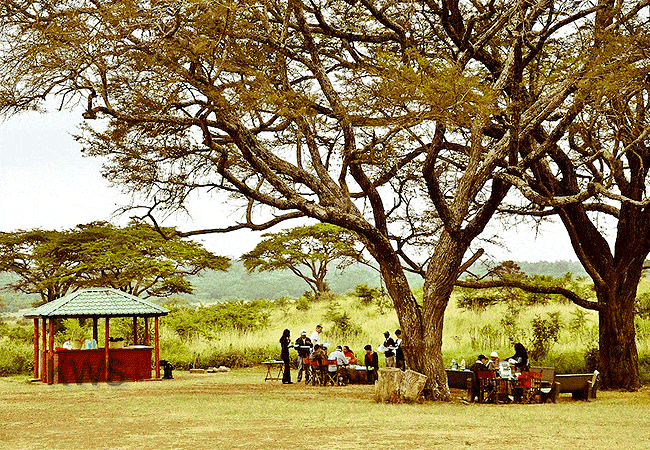
Booking & Reservations Nairobi National Park Contact
Mobile: +254-721-242-711
WhatsApp: +254-721-242-711
Reservations: +254 718-179-967
Email: [email protected]
Website: https://africanspicesafaris.com


